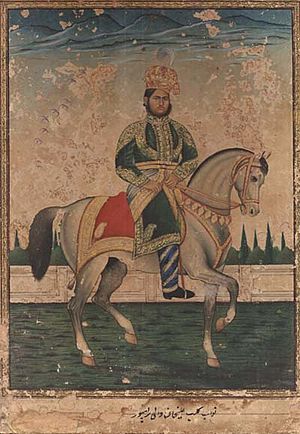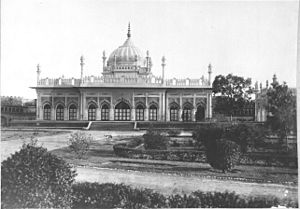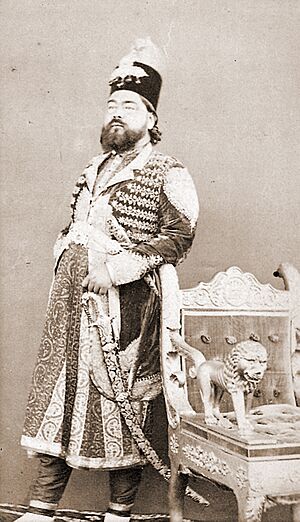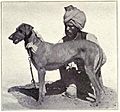Rampur State facts for kids
Quick facts for kids
Rampur State
Dar-Ul-Insha
|
|||||||||
|---|---|---|---|---|---|---|---|---|---|
| 1774–1947 | |||||||||
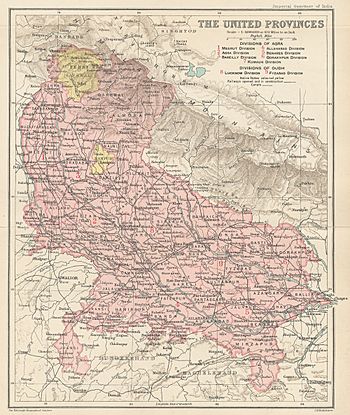
Rampur State in yellow
|
|||||||||
| Capital | Rampur | ||||||||
| Common languages | Urdu, English | ||||||||
| Government | Absolute Monarchy | ||||||||
| Nawab of Rampur | |||||||||
|
• 1754-1794
|
Faizullah Khan (First) | ||||||||
|
• 1794
|
Muhammad Ali Khan | ||||||||
|
• 1794
|
Ghulam Muhammad Khan | ||||||||
| History | |||||||||
|
• First Rohilla War
|
7th October 1774 | ||||||||
| 15th August 1947 | |||||||||
| Area | |||||||||
| 1941 | 2,310 km2 (890 sq mi) | ||||||||
| Population | |||||||||
|
• 1941
|
477,042 | ||||||||
|
|||||||||
Rampur State was a special kind of kingdom in British India. It was called a "princely state" because it was ruled by its own leader, called a Nawab. Even though it was part of the larger British Empire in India, it had its own ruler. It was also a "15 gun-salute" state, which meant it was considered very important.
This state began on October 7, 1774. It was created after an agreement with another ruler called the Nawab of Oudh. Its main city and capital was Rampur. The state covered an area of about 945 square miles.
When India became independent in 1947, Rampur State joined with other nearby states. These included places like Benares and Tehri-Garwal. They all became part of a larger area called the United Provinces.
Images for kids
-
A portrait of Nawab Muhammad Khan Bangash, not the Nawab of Rampur but the Nawab of Farrukhabad, around 1730. This painting is kept at the Bibliothèque nationale de France in Paris.




